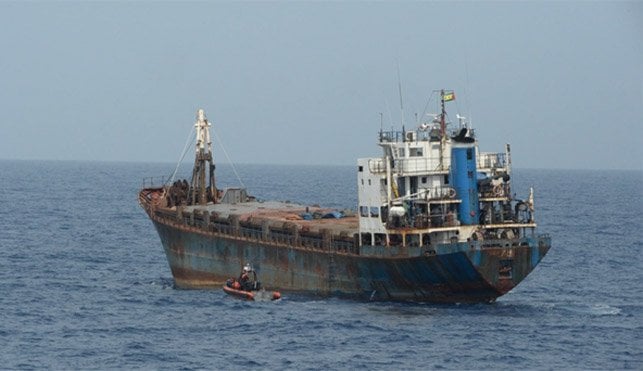Video: Florida Reefs Abandoned Cargo Ship Used by Smugglers

Officials in Florida came up with a novel way to dispose of a small cargo ship that was seized more than a decade ago while smuggling cocaine. The vessel, which was last known as the Borocho, was added to the state’s artificial reef program.
The saga of the vessel, which was built in 1977 in Japan, began in September 2014 when the U.S. Coast Guard cutter Bear was on patrol in the Caribbean. The USCG identified the vessel as “suspicious” and ordered it to stop for a boarding and inspection. A search of the vessel turned up 719 kilograms of cocaine worth an estimated wholesale value of more than $23 million.
The United States seized the vessel, and it was taken to a backwater along the Miami River in Miami, Florida. The owners of the vessel appeared to have abandoned it, and over the years, its condition declined. The ship’s last known registry was in São Tomé & Principe, but abandoned, the federal and state government had to figure out how to dispose of the 226-foot (69-meter) vessel.
Martin County, Florida, has been part of a state-sponsored reefing program, sinking its first artificial reefs in the 1970s. A group of retirees and sport fishing enthusiasts, calling themselves the “Reeftirees,” began the movement to create self-sustaining marine habitats. The county has participated in the reefing of eight large vessels, the last of which was completed in 2018.
The Florida Fish & Wildlife Conservation Commission was able to obtain the Borocho and, in May 2025, put out for bids the work to remediate and prepare the vessel for reefing. It paid the estimated $500,000 to clean and prep the vessel and made it available to Martin County for reefing.
The final voyage began early Tuesday morning, November 18, as the vessel was towed approximately 9 miles offshore to a position near St. Lucie inlet. It was positioned offshore from Stuart, Florida, on the state’s east coast.
The reefing took a little more than an hour, according to local media reports. By about 1:20 pm, the vessel had come to rest in about 180 feet of water. The spot was selected because it was a sandy bottom ideal for the reefing. The vessel became the newly christened Boo McCulley Reef, named in honor of John McCulley, a local contractor who was a strong supporter of the program and instrumental in the reefing efforts. He spent 20 years developing the artificial reef before his passing in November 2020.
